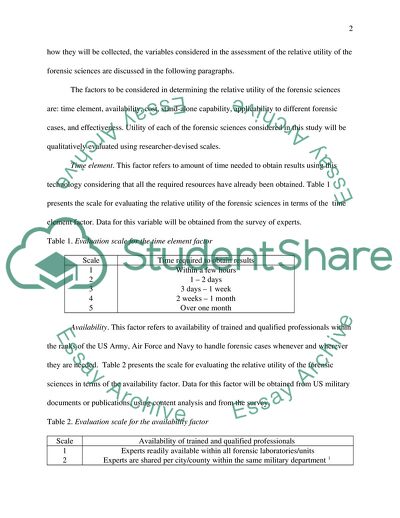
- Home
- Free Samples
- Premium Essays
- Editing Services
- Extra Tools
- Essay Writing Help
- About Us
- Studentshare
- Subjects
- Miscellaneous
- Preliminary Data Collection and Analysis
Preliminary Data Collection and Analysis - Essay Example

- Subject: Miscellaneous
- Type: Essay
- Level: Undergraduate
- Pages: 4 (1000 words)
- Downloads: 0
- Author: ednanolan
Extract of sample "Preliminary Data Collection and Analysis"
A mixed method of data collection is proposed using analysis of existing data, or in some texts, records study, quantified content analysis, and the survey methods (Dantzker and Hunter, 2006; Punch, 2006). According to Dantzker and Hunter (2006), analysis of existing records and quantified content analysis are efficient techniques in carrying out criminal justice-related research. The survey was chosen over the Delphi Technique because of the time constraint and intricacies of using this structured group process for the proposed study (Palmiotto, 2004).
Qualitative research offers different perspectives into the study of crime, either as a primary research tool or as a complement to quantitative procedures. In this study, qualitative research is used from the second viewpoint of its importance. As implied by the strategies, data will be collected from US military crime records, public documents and publications, together with the evaluation from respondents knowledgeable in the field being studied. To obtain a firm grasp of what data are needed and how they will be collected, the variables considered in the assessment of the relative utility of the forensic sciences are discussed in the following paragraphs.
The factors to be considered in determining the relative utility of the forensic sciences are: time element, availability, cost, stand-alone capability, applicability to different forensic cases, and effectiveness. Utility of each of the forensic sciences considered in this study will be qualitatively evaluated using researcher-devised scales. Time element. This factor refers to amount of time needed to obtain results using this technology considering that all the required resources have already been obtained.
Table 1 presents the scale for evaluating the relative utility of the forensic sciences in terms of the time element factor. Data for this variable will be obtained from the survey of experts. Availability. This factor refers to
...Download file to see next pages Read More
- TERMS & CONDITIONS
- PRIVACY POLICY
- COOKIES POLICY